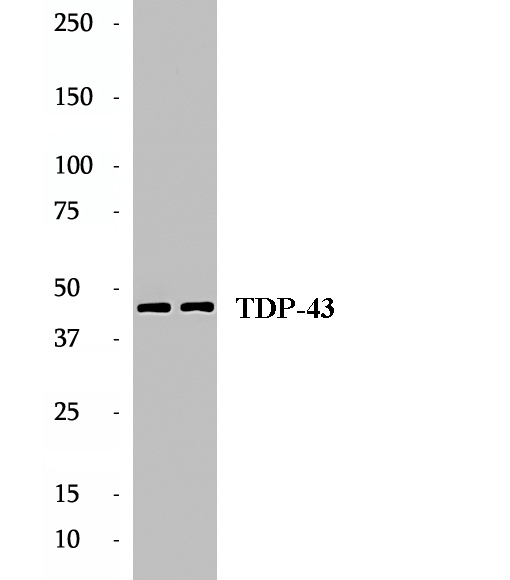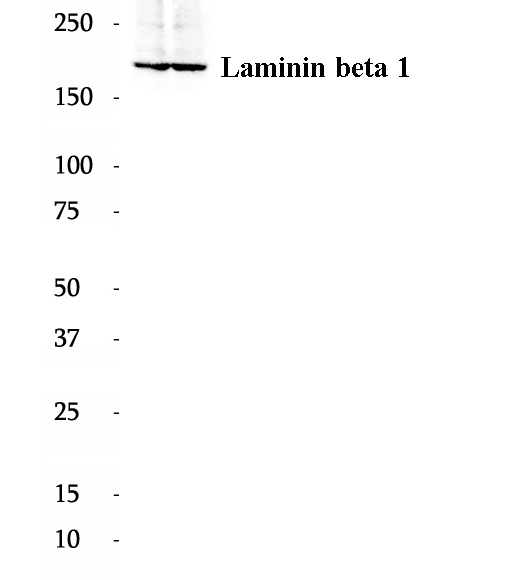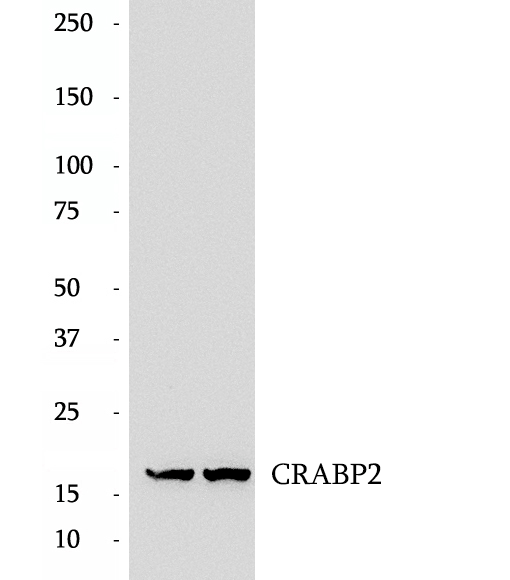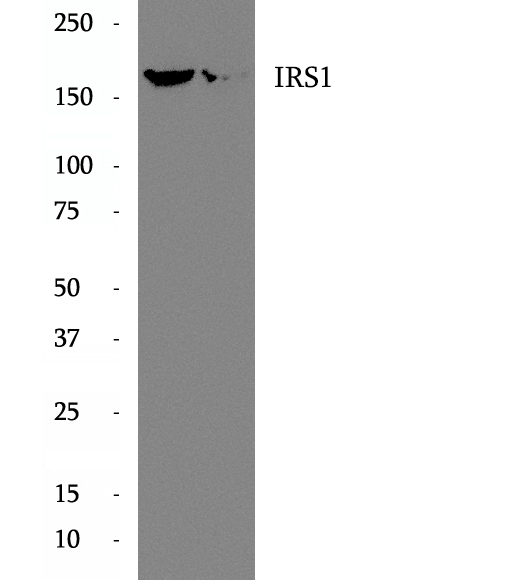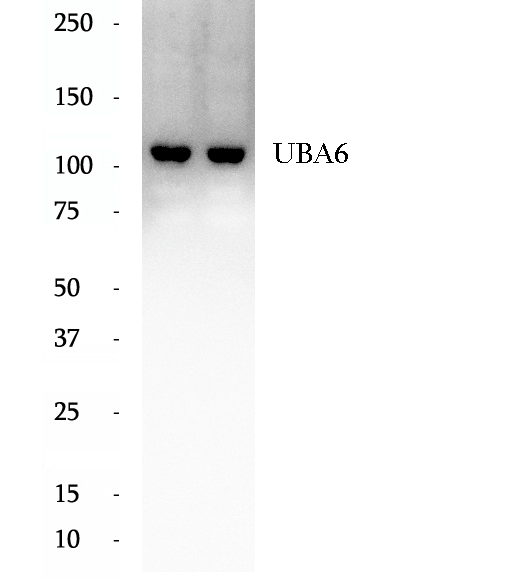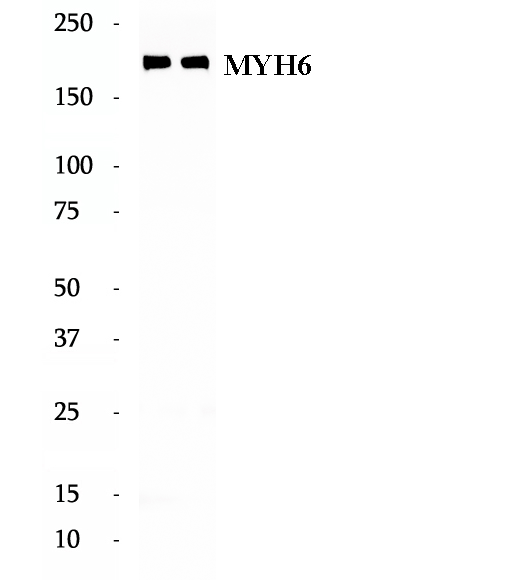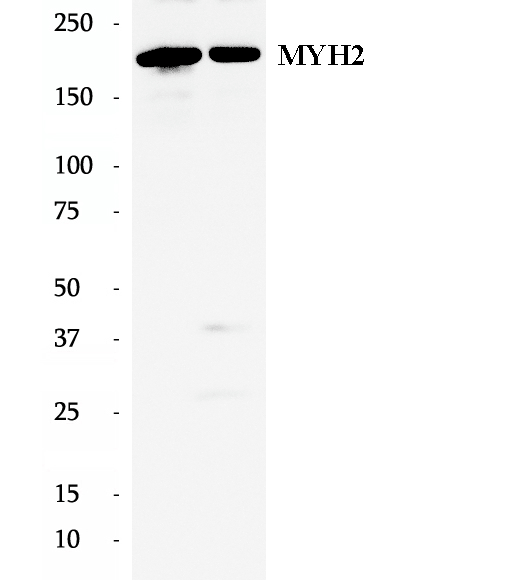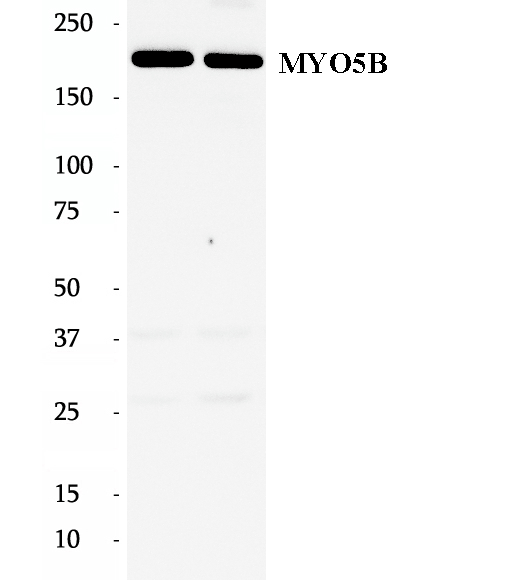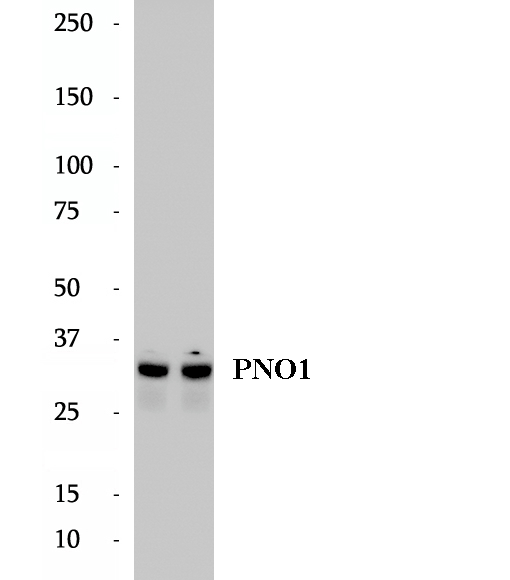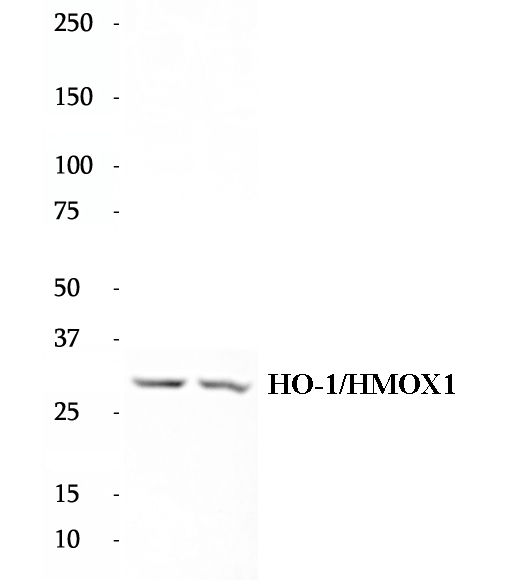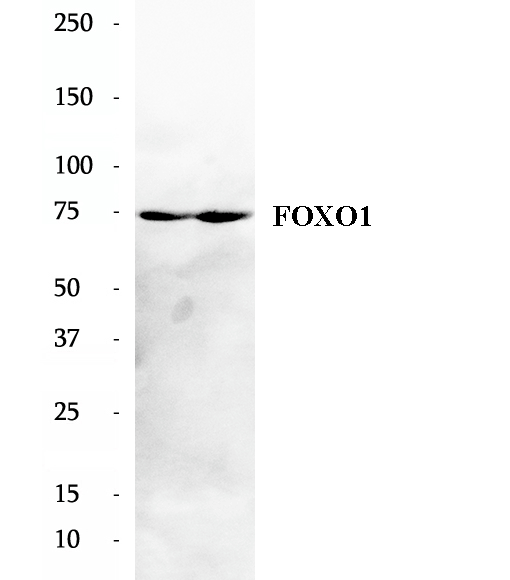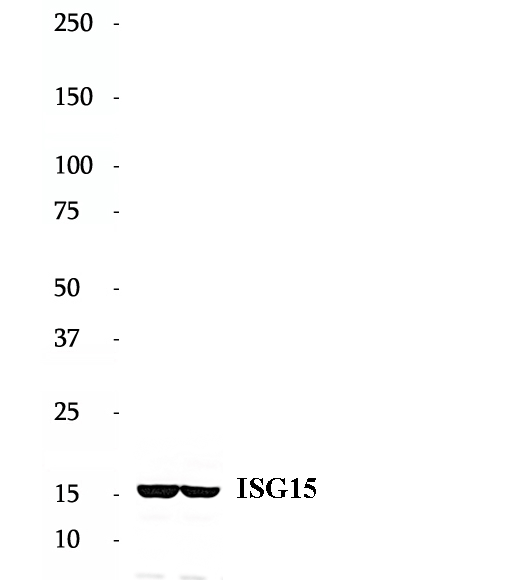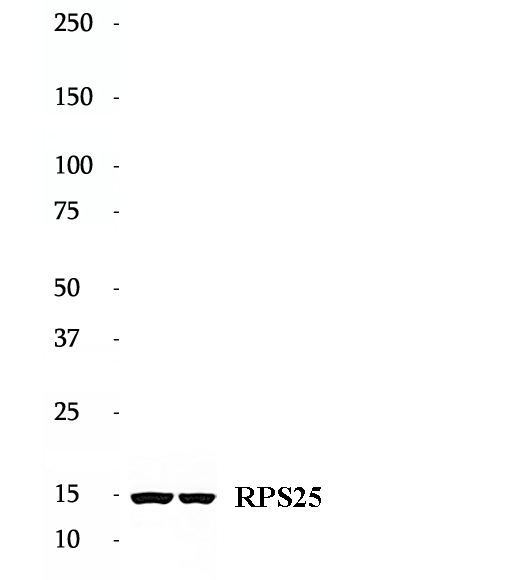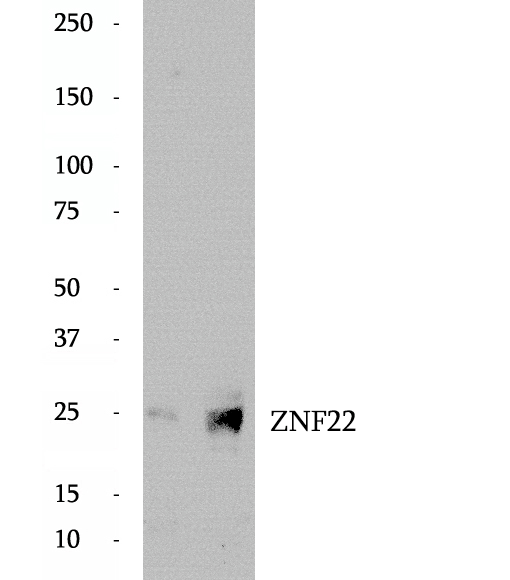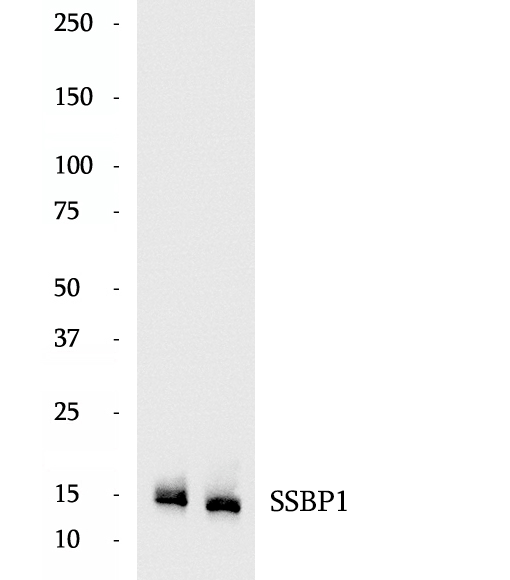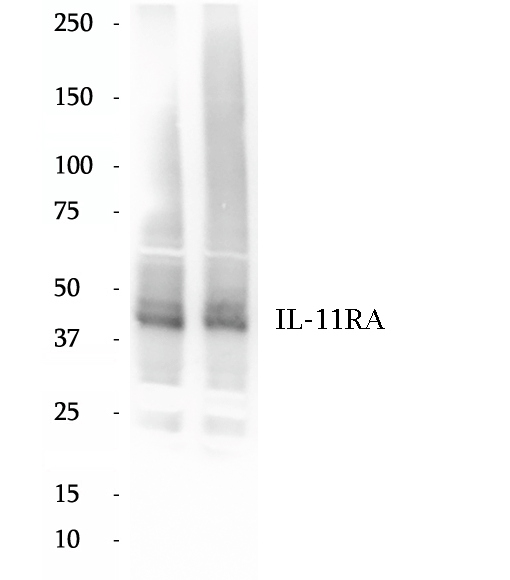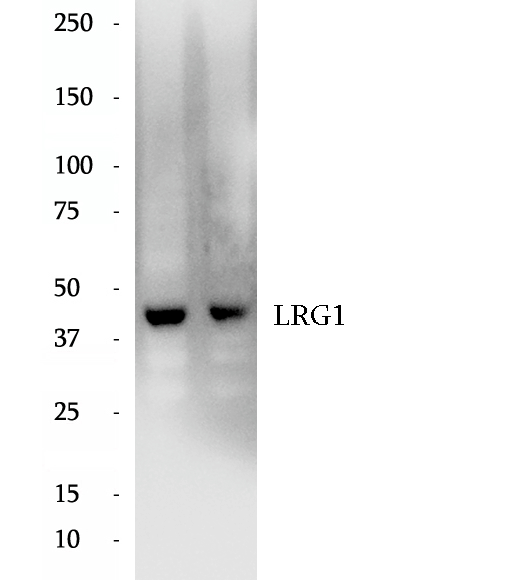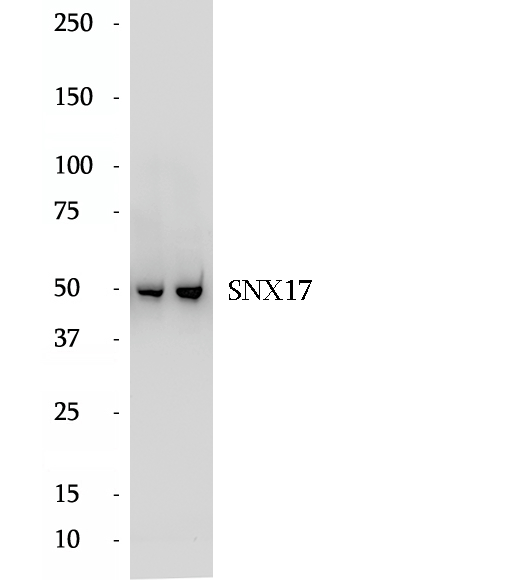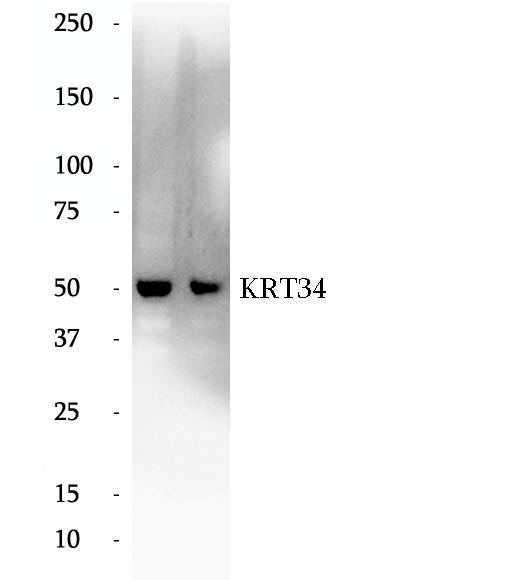|
BP64801
|
Anti-TDP-43 antibody
|
|
|
|
|
The TARDBP gene encodes the TDP-43 protein, initially found to repress HIV-1 transcription by binding TAR DNA. TDP-43 has since been shown to bind RNA as well as DNA, and have multiple functions in transcriptional repression, translational regulation and pre-mRNA splicing. For instance, it is reported to regulate alternate splicing of the CTFR gene. In 2006 Neumann et al. found that hyperphosphorylated, ubiquitinated and/or cleaved forms of TDP-43, collectively known as pathological TDP-43, play a major role in the disease mechanisms of ubiquitin-positive, tau- and alpha-synuclein-negative frontotemporal dementia (FTLD-U) and in amyotrophic lateral sclerosis (ALS). Proteintech's 10782-2-AP antibody is a rabbit polyclonal antibody recognizing N-terminal TDP-43. It recognizes the intact 43 kDa protein as well as all posttranslationally modified and truncated forms in multiple applications.Various forms of TDP-43 exist, including 18-35 kDa of cleaved C-terminal fragments, 45-50 kDa phospho-protein, 55 kDa glycosylated form, 75 kDa hyperphosphorylated form, and 90-300 kDa cross-linked form. (17023659, 19823856, 21666678, 22193176) Recently TDP-43 has been reported to be overexpressed in triple negative breast cancer (TNBC) and it may be a potential target for TNBC diagnosis and drug design. (29581274)
|
|
BP62569
|
Anti-Laminin beta 1 antibody
|
|
|
|
|
Laminins are a family of basement membrane glycoproteins composed of three nonidentical chains, laminin alpha, beta and gamma (formerly A, B1, and B2, respectively) is expressed in most tissues that produce basement membranes, and is one of the 3 chains constituting laminin-1, the first laminin isolated from Engelbreth-Holm-Swarm (EHS) tumor.Laminin beta 1 is also a subunit of laminin-2 (laminin-211 or merosin), laminin-6 (laminin-311 or K-laminin), laminin-8 (laminin-411), laminin-10 (laminin-511) and laminin-12 (laminin-213).
|
|
BP61089
|
Anti-CRABP2 antibody
|
|
|
|
|
Cellular retinoic acid binding protein 2 (CRABP2, synonyms: RBP6, CRABP-II). A number of specific carrier proteins for members of the vitamin A family have been discovered. Cellular retinoic acid binding proteins (CRABP) are low molecular weight proteins whose precise function remains unknown.CRABP2 is important in retinoic acid-mediated regulation of human skin growth and differentiation. It has been postulated that the CRABP2 gene is transcriptionally regulated by a newly synthesized regulatory protein.
|
|
BP62422
|
Anti-IRS1 antibody
|
|
|
|
|
Ins receptor substrate 1 (IRS1) was the first cloned and characterized member of the IRS family which are involved in ins receptor (IR) and ins-like growth factor I receptor (IGF-IR) signaling. IRS1 is phosphorylated by ins receptor tyrosine kinase and is involved in various cellular processes including DNA repair fidelity, transcriptional activity, and cell growth can support tumor development and progression. Mutations in this gene are associated with type II diabetes and susceptibility to ins resistance. IRS1 has a predicted molecular weight of 132 kDa, however, as a result of its extensive serine phosphorylation it separates on a SDS gel as a band of approximately 160-185 kDa.
|
|
BP64308
|
Anti-SCRN1 antibody
|
|
|
|
|
SCRN genes encode protein members of the secernin family including Secernin 1, Secernin 2 and Secernin 3. Function of Secernin 2 and Secernin 3 are so far not well understood. Secernin 1 is a novel 50-kDa cytosolic protein that appears to be involved in the regulation of exocytosis from peritoneal mast cells. Secernin-1 a novel tumor-associated antigen (TAA) and may be a universal marker of different cancer types including gastric cancer, which has been validated by several researches. Measurement of SCRN1 can be used in the early detection of cancer or in the surveillance of patients who undergo surgery.
|
|
BP65219
|
Anti-VARS2 antibody
|
|
|
|
|
VARS2 (Valine--tRNA ligase, mitochondrial) is also named as KIAA1885, VARS2L, VARSL and belongs to the class-I aminoacyl-tRNA synthetase family. The deduced 993-amino acid protein has an N-terminal mitochondrial targeting signal with a predicted cleavage site after residue 29. VARS2 has characteristics of a class I mitochondrial aminoacyl-tRNA synthetase, including a classical Rossmann fold.
|
|
BP62999
|
Anti-MYH6 antibody
|
|
|
|
|
MYH6 encodes the alpha-cardiac myosin heavy chain (aMHC) which is a major contractile protein exclusively expressed in the myocardium of the heart. Expression of MYH6 is down-regulated in cardiac myopathy and failing hearts. Defects in MYH6 lead to congenital heart disease (CHD), and a spectrum of phenotypes ranging from hypertrophic cardiomyopathy (HCM) and dilated cardiomyopathy (DCM). (15737621, 20656787)
|
|
BP62997
|
Anti-MYH2 antibody
|
|
|
|
|
MYH2 (Myosin II) is a member of the class II or conventional myosin heavy chains. Myosin II was first isolated from muscle but is also found in non muscle cells, and it is especially enriched in highly motile cell types such as amoebae. It forms bipolar filaments that interact with actin filaments to produce contraction. And it is the motor protein that generates force to drive muscle contraction. Functions in skeletal muscle contraction. The antibody is specific to MYH2, will not bind other myosins. It is a skeletal muscle specific antibody.
|
|
BP63013
|
Anti-MYO5B antibody
|
|
|
|
|
MYO5B is a member of the class V of unconventional, dimeric nonfilamentous myosins, which may be involved in vesicular trafficking. Members of the Rab family of small GTPases, consisting of Rab11a, Rab11b, and Rab25, have recently emerged as potential mediators of vesicle transport by MYO5B. MYO5B is required for polarization of hepatocytes and mutations of MYO5B could disrupt epithelial cell polarity. Loss-of-Function of MYO5B caused by mutation is the main cause of microvillus inclusion disease (MVID). Recently it was reported that the expression of MYO5B was downregulated in gastric cancer and inactivation of MYO5B may contribute to tumorigenesis.
|
|
BP63736
|
Anti-PNO1 antibody
|
|
|
|
|
The function of PNO1 remains largely unknown in mammal. PNO1 plays a role in proteasome and ribosome neogenesis in yeast.
|
|
BP62203
|
Anti-HO-1/HMOX1 antibody
|
|
|
|
|
Heme oxygenase (HMOX1) catalyzes the first and rate-limiting step in the degradation of heme to yield equimolar quantities of biliverdin Ixa, carbon monoxide (CO), and iron. It has 3 isoforms: HO-1 is highly inducible, whereas HO-2 and HO-3 are constitutively expressed is expressed in many tissues and vascular smooth muscle cells, and endothelial cells and has been identified as an important endogenous protective factor induced in many cell types by various stimulants, such as hemolysis, infiammatory cytokines,oxidative stress, heat shock, heavy metals, and endotoxin (James R. Reed, Pharmacology, 535-568).
|
|
BP61780
|
Anti-FOXO1 antibody
|
|
|
|
|
FOXO1, also named as FOXO1A, FKHR and FKH1, is a member of the FOXO subfamily of Forkhead transcription factors. FOXO1is a transcription factor which acts as a regulator of cell responses to oxidative stress. FOXO1 interacts with LRPPRC andSIRT1. In the presence of KIRT1, FOXO1 mediates down-regulation of cyclin D1 and up-regulation of CDKN1B levels which are required for cell transition from proliferative growth to quiescence. FOXO1 contains three predicted protein kinase B phosphorylation sites (Thr-24, Ser-256, and Ser-319) that are conserved in other FOXO proteins. The t (2;13) and the variant t (1;13) translocations generate PAX3/FKHR and PAX7/FKHR fusion proteins respectively. The resulting protein is a transcriptional activator. Defects in FOXO1 are a cause of rhabdomyosarcoma type 2 (RMS2).
|
|
BP62426
|
Anti-ISG15 antibody
|
|
|
|
|
ISG15 is a ubiquitin-like protein that becomes conjugated to many cellular proteins upon activation by interferon-alpha (IFNA) and -beta (IFNB). ISG15 forms covalent conjugates with its target proteins in a process called ISGylation, which in mammals is known to play a role in antiviral immunity. ISG15 proteins possess two ubiquitin-like (UBL) domains and a highly conserved C-terminal LRGG sequence, the latter being known as the ubiquitin conjugation motif. Intracellular ISG15 are conjugated, via the LRGG motif, to target proteins through a process called ISGylation, which resembles largely ubiquitination, the process of formation of ubiquitin conjugates. Unconjugated extracellular ISG15, which are released from several types of human and murine cells, are known to possess cytokine-like activity.
|
|
BP64211
|
Anti-RPS25 antibody
|
|
|
|
|
Ribosomal protein S25 (RPS25) is a novel MDM2 interacting protein. It may be involved in viral replication of Dicistroviridae and hepatitis C viruses. RPS25 is overexpressed in human leukemia cells exhibiting adriamycin resistance. It may have a role in p53-mediated apoptosis and cell-cycle arrest. The expected MW of RPS25 is about 15-17kDa. Catalog# 23599-1-AP is a rabbit polyclonal antibody raised against full-length RPS25, and is recommended for ELISA, Western blotting.
|
|
BP65398
|
Anti-ZNF22 antibody
|
|
|
|
|
ZNF22 encodes a protein that is expressed in the epithelial component of the developing tooth organ during early bud and cap stages as well as in osteoblasts of craniofacial bone and the developing tongue.
|
|
BP64632
|
Anti-SSBP1 antibody
|
|
|
|
|
Single-stranded DNA-binding protein, mitochondrial is a protein that in humans is encoded by the SSBP1 gene.
|
|
BP62343
|
Anti-IL-11RA antibody
|
|
|
|
|
Interleukin-11 (IL-11), a member of the IL-6 family of cytokines, was firstly identified in bone marrow-derived stromal cells and gp130. IL-11RA binds IL-11 and gp130 transmits signals to the nucleus via Janus kinase (JAK) activation. In addition to a membrane-bound form, IL-11RA can also exist as a soluble form (sIL-11RA) that acts as an agonist of IL-11 activity.
|
|
BP62654
|
Anti-LRG1 antibody
|
|
|
|
|
LRG1, also known as LRG, is a member of the leucine-rich repeat (LRR) family of proteins, containing eight LRR (leucine-rich) repeats and one LRRCT domain. The gene of LRG1 maps to chromosome 19p13.3, and encodes a 347-amino acid protein with a predicted unmodified molecular weight of 38 kD. The mature form of LRG1 is a secreted glycoprotein which has 312 amino acids and an experimentally determined molecular mass of 45 kD. The LRR family of proteins, including LRG1, have been shown to be involved in protein-protein interaction, signal transduction, and cell adhesion and development. LRG1 is expressed during granulocyte differentiation. Levels of the LRG protein are markedly elevated in acute appendicitis and therefore could be used as a diagnostic aid.
|
|
BP64534
|
Anti-SNX17 antibody
|
|
|
|
|
Sorting nexin 17 (SNX17, synonym: KIAA0064) is a member of the sorting nexin family. Members of this family contain a phox (PX) domain, which is a phosphoinositide binding domain, and are involved in intracellular trafficking.SNX17 does not contain a coiled coil region, like some family members, but contains a B41 domain. This protein interacts with the cytoplasmic domain of P-selectin, and may function in the intracellular trafficking of P-selectin.
|
|
BP62547
|
Anti-KRT34 antibody
|
|
|
|
|
Keratins are a large family of proteins that form the intermediate filament cytoskeleton of epithelial cells. Keratin expression is highly regulated, tissue specific, and varies according to cell-state. Type I keratins consist of acidic, low molecular weight proteins with MW ranging from 40 kDa (KRT19) to 64 kDa (KRT9). Type 2 keratins consist of basic or neutral, high molecular weight proteinswith MW from 52 kDa (KRT8) to 67 kDa (KRT18). KRT 34 is a type I keratin.
|
